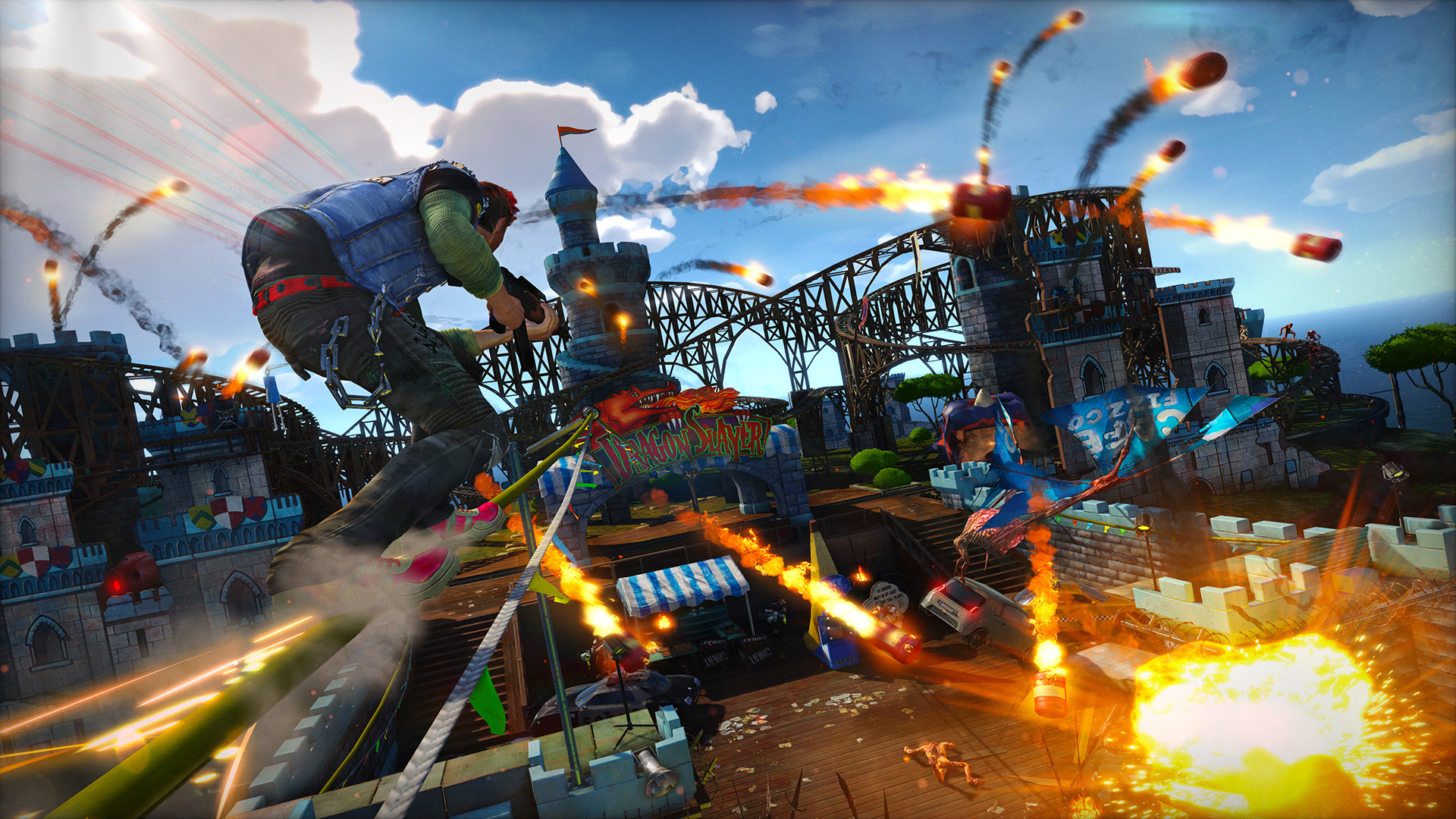Welcome to the world of retro gaming, where classic games and consoles hold a place of reverence. Among those classic consoles was the iconic Atari 2600, which brought gaming into many homes across America. One of the most beloved games for the console, which is still talked about today, is Donkey Kong.
Although the game is decades old, its appeal has not faded. Current-day gaming enthusiasts still hold Donkey Kong Atari 2600 in high regard. The simple, yet challenging gameplay, along with brightly-colored graphics, set new standards in the gaming industry. Its success paved the way for many future games that incorporated similar elements.
In addition, one of the most significant concepts intertwined with the Donkey Kong Atari 2600 is nostalgia. Playing the game today takes gamers back to a simpler time. As we delve into this review, we will explore the significance of the Atari console, the Donkey Kong game, its relevance to today’s gaming culture and how nostalgia is impacting the gaming world.
Overview of Donkey Kong and Atari Era
The late 1970s to early 80s was a period of massive growth for the video game industry. One of the most famous name during this time was Atari – known for it’s breakout console, the Atari 2600. Established in 1977, the Atari 2600 rapidly gained prominence and became a household name. The video game industry had begun to boom, eventually leading to a monumental crash in 1983. Though this era was short-lived, it played a significant role in the development of the gaming industry today.
During this era, one game that changed it all was Donkey Kong. A creation of the legendary video game designer Shigeru Miyamoto, Donkey Kong took the gaming world by storm. The game was released in 1981, and it was created for the coin-op arcade machine platform. The aim of the game was simple; the player controlled a small, pixelated Mario, in his struggle to rescue his girlfriend from the clutches of the oversized gorilla, Donkey Kong.
The game contained several levels of gameplay, allowing players to jump and dodge obstacles, and climb ladders in their attempt to rescue Mario’s girlfriend. It’s the brilliant gameplay mechanics, lovely sound effects, and captivating graphic design, that made Donkey Kong a classic. For many gamers today, Donkey Kong stands out as the game that first ignited their passion and wonder for gaming. It was a turning point for the gaming industry that raised expectations for future production of games.
Today, Donkey Kong is still being played on modern consoles like Nintendo Switch, and it has evolved tremendously over the years. However, the classic Donkey Kong still maintained its glory and remains a favorite among retro gamers.
Donkey Kong Atari 2600 Review
When Donkey Kong was first introduced in the arcades in the early 1980s, it became an instant classic. Now, decades later, the game is still popular, and it was released for consoles like the Atari 2600. While the classic Donkey Kong game had better graphics and sound, the Atari 2600 version has its unique charm and game experience.
Donkey Kong on the Atari 2600 is a side-scrolling platform game with four levels, where the player controls the titular character, Jumpman. The overall gameplay is like the original arcade version where the player jumps over barrels and other obstacles to save Pauline from Donkey Kong’s clutches. The gameplay is simple and easy to understand, but you may find it challenging to master.
The Atari 2600 version had few advancements compared to its arcade counterpart. The graphics were relatively poorer and lacked the arcade version’s animations. The sound quality was not great, which is understandable considering the technological limitations during the time it was released. However, the game still holds up, and its limitations add to its charm.
The game’s overall functionality is fantastic and worth every penny. The controls are easy to use, and the game stages are fun and challenging. Speaking of challenging, towards the fourth level, the game’s difficulty increases exponentially, making it incredibly difficult to complete. The game’s high difficulty level is one of the reasons it is still regarded as one of the iconic games of all time.
In conclusion, Donkey Kong for Atari 2600 is an excellent game in its own way. While it lacks all the advancements of the original arcade version, it still manages to provide the same level of enjoyment. If you love retro games, this is an excellent title to add to your collection.
Nostalgia Effect
Nostalgia is a powerful emotion that plays a significant role in our everyday lives. It is an emotion that takes us back to a particular moment in history, reminding us of past experiences, people, and places. When it comes to retro gaming, nostalgia plays a critical role in shaping perceptions and experiences.
For many gamers, nostalgia can be so intense that it forms an inseparable connection to a piece of gaming history, making such games special and memorable. The retro gaming community thrives on this sense of nostalgia, with gamers often celebrating the games that shaped their childhoods, sometimes to the point of obsession.
Donkey Kong on the Atari 2600 is an excellent example of a game that fits into the current retro gaming trend. It is a game that holds a special place in the hearts of many gamers, thanks to the console’s prominence in popular culture during its time.
Some might argue that the Donkey Kong Atari 2600 version is not the best to play, but it is still valuable for gamers today as it represents an essential part of video game history. The nostalgia that comes with playing the game is an experience that gamers can cherish, as it reminds them of an era when video games were new and exciting.
The trend towards retro gaming is only becoming more popular today, with more and more gamers delving into the past. While modern video games are often praised for their technological advancements, retro games have profound sentimental value that cannot be replicated.
Donkey Kong on the Atari 2600 may not be the most advanced game in terms of graphics or gameplay, but it perfectly encapsulates the nostalgia effect that retro gaming brings. The feeling of nostalgia that comes with playing the game adds a unique experience that modern-day gaming cannot replicate, and time will only continue to strengthen the value of such games and consoles.
Maintaining Nostalgia:
One of the remarkable things about the Donkey Kong game on the Atari 2600 console is that its cartridge has a long-lasting life. There are reports of decades-old cartridges that still work perfectly fine today. It is impressive how the game has managed to maintain its gameplay mechanics and visuals, even after so many years.
While the longevity of the game is impressive, there are still efforts by both console manufacturers and fans to preserve the game for future gaming enthusiasts. Manufacturers have created consoles like Atari Flashback 8 Gold, which includes a range of classic games, including Donkey Kong. On the other hand, fans are working hard to keep the game intact by sharing digital copies, ensuring that it remains accessible to everyone.
The value of nostalgia in video game culture is undeniable. It provides an opportunity for gamers to appreciate the history and journey of the video game industry. Preserving retro games such as Donkey Kong reminds us of the significant advancements in hardware and software technologies since the early days of video gaming. It is essential to maintain the integrity of classic video games to educate future generations about their roots and to ensure that its gameplay is not lost to time.
Overall, the longevity of the Donkey Kong cartridge on the Atari 2600 console is impressive. Despite the technological advancements in modern gaming, the cartridge has maintained its functionality, providing gamers with an opportunity to enjoy the game as it was intended to be played. The efforts of console manufacturers and fans to preserve the game are commendable, ensuring that it remains an essential part of video game culture.
Conclusion
In conclusion, the Donkey Kong game for Atari 2600 console is a classic game that still resonates with gamers today. The game showcased the full potential of the console and set new standards for the video game industry. Its gameplay mechanics are still admired and emulated by game developers today.
The concept of nostalgia has a profound impact on gamers, and the Donkey Kong game is a prime example of how people can feel a sense of nostalgia for old games and systems. The game’s prevalence in pop culture is a testament to its enduring popularity even after all these years.
Overall, the Atari 2600 and its iconic titles will always hold a special place in gaming history and the hearts of gamers around the world. The importance of nostalgia in the video game culture is something that cannot be denied, and the Donkey Kong game serves as a perfect example of it. The game has undergone a lot of changes through the years, but its core gameplay, charm, and nostalgic value are still preserved. It will continue to serve as a reminder of the evolution and impact of video games on popular culture, and how something as simple as jumping, climbing, and dodging virtual obstacles can create an inexplicable feeling of joy and accomplishment.
FAQs
1. Why is Donkey Kong on Atari 2600 so significant?
Donkey Kong on Atari 2600 is significant because it was one of the first games to be ported from arcade to home console. Its success laid the groundwork for future console gaming and set standards for future game productions.
2. How does Donkey Kong on Atari 2600 compare to the original arcade version?
There are some functional limitations in the Atari 2600 version due to the technological capabilities of the time. The game’s graphics and sound effects were simplified compared to the arcade version. However, the gameplay mechanics remain almost the same in both versions.
3. What is the significance of nostalgia in the video game industry?
Nostalgia is significant in the video game industry because it plays a major role in how people perceive and experience games. It can influence purchasing decisions, and it sparks interest in retro gaming and preservation efforts.
4. How do console manufacturers and fans preserve retro games?
Console manufacturers and fans preserve retro games through emulation, remasters, and retro-inspired productions. They also create preservation sites and collections that highlight the significance of retro games in the video game industry’s history and culture.
5. What is the value of nostalgia in the video game culture?
The value of nostalgia in video game culture is that it keeps the spirit and essence of early video games alive. It also provides gamers with an appreciation for the industry’s rich history while allowing them to enjoy retro games in modern ways.



